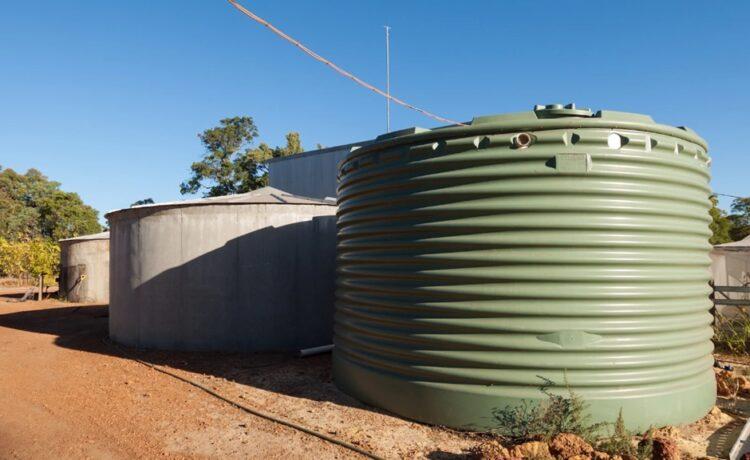Rainwater harvesting is a sustainable practice that has gained popularity across the globe, particularly in regions facing water scarcity. Installing rainwater tanks is a practical and environmentally friendly solution to manage water resources effectively. This article explores the benefits of rainwater tanks, highlighting their impact on conservation, cost savings, and community resilience.
Understanding Rainwater Tanks
Rainwater tanks, also known as rainwater harvesting systems, are structures designed to collect and store rainwater from rooftops and other surfaces. Typically made from materials such as polyethylene, concrete, or steel, these tanks come in various sizes to accommodate different needs. The collected rainwater can be used for a variety of purposes, including irrigation, flushing toilets, washing vehicles, and even as potable water when properly treated.
Environmental Benefits
Water Conservation
One of the most significant advantages of installing rainwater tanks is their contribution to water conservation. By capturing and storing rainwater, households can reduce their dependence on municipal water supplies. This is particularly important in areas where droughts are common or where water resources are limited. Utilizing rainwater for non-potable uses, such as gardening and landscaping, allows communities to conserve valuable freshwater resources, helping to ensure sustainable water management.
Reducing Stormwater Runoff
Rainwater tanks also play a crucial role in mitigating stormwater runoff, which can lead to flooding and water pollution. When rainwater is directed into storage tanks instead of flowing into storm drains, it reduces the volume of water entering the drainage system. This is particularly beneficial in urban areas where impervious surfaces prevent water from naturally soaking into the ground. By minimizing stormwater runoff, rainwater tanks help protect local waterways from pollutants and reduce the risk of flooding during heavy rains.
Economic Advantages
Cost Savings
Installing rainwater tanks can lead to significant cost savings for households and businesses. By reducing reliance on municipal water supplies, property owners can lower their water bills. In many regions, water prices are steadily increasing, making rainwater harvesting an economically sound investment. Additionally, using rainwater for irrigation can decrease the costs associated with maintaining gardens and landscapes, especially in areas where water restrictions may apply.
Government Incentives
Many governments offer incentives for installing rainwater tanks, including rebates, tax credits, or grants. These financial benefits can help offset the initial costs of purchasing and installing a rainwater harvesting system. Furthermore, some regions have regulations that encourage or require the use of rainwater tanks in new construction projects, making them a viable option for developers and builders seeking to comply with sustainability standards.
Enhancing Community Resilience
Water Security
In an era of increasing climate variability, water security is a growing concern for communities worldwide. Rainwater tanks provide a reliable source of water, particularly during dry spells or droughts. By harnessing rainwater, communities can better prepare for water shortages and reduce the impact of extreme weather events. This increased water security contributes to overall community resilience, allowing residents to manage their resources effectively.
Promoting Sustainable Practices
The installation of rainwater tanks can foster a culture of sustainability within communities. By demonstrating the benefits of rainwater harvesting, property owners can inspire their neighbors to adopt similar practices, leading to a collective effort toward environmental stewardship. Community workshops and educational programs can further enhance awareness and promote sustainable water management practices, encouraging local engagement and participation.
Considerations for Installation
Sizing and Location
When considering the installation of rainwater tanks, it’s essential to assess the appropriate size and location for the system. Factors such as roof area, average rainfall, and water usage requirements should be evaluated to determine the optimal tank size. Additionally, the location of the tank should be convenient for accessing water and complying with local regulations.
Maintenance
Regular maintenance is crucial to ensure the efficient operation of rainwater tanks. This includes cleaning gutters and downspouts, inspecting the tank for leaks, and ensuring that the water is free from contaminants. Proper maintenance not only extends the lifespan of the system but also ensures that the harvested rainwater is safe for use.
Conclusion
Installing rainwater tanks offers numerous benefits, from conserving water and reducing stormwater runoff to providing economic advantages and enhancing community resilience. As climate change continues to pose challenges to traditional water resources, harnessing nature through rainwater harvesting becomes increasingly important. By investing in rainwater tanks, individuals and communities can take proactive steps toward sustainable water management, ensuring a secure and resilient future.


